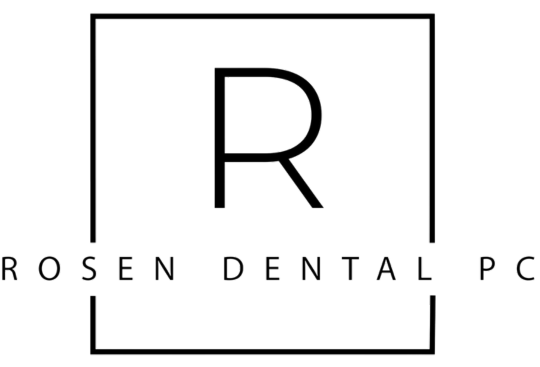Are you looking for ways to ensure your inlay restorations are not just good, but exceptional? At Rosen Dental PC, we prioritize precision in inlay preparation techniques to deliver superior restoration results that blend seamlessly with your natural teeth for optimal function and aesthetics.
Precision Drilling: Key to Perfect Fit
When it comes to inlay preparation, the adage “measure twice, cut once” could not be more pertinent. Precision drilling is the cornerstone of ensuring a perfect fit for dental restorations. Utilizing state-of-the-art tools and techniques, dentists can achieve the exact dimensions required for the inlay, which not only fits seamlessly with the natural contours of the tooth but also restores its function and aesthetics. This meticulous approach minimizes the risk of gaps and misalignments that can compromise the longevity and effectiveness of the restoration. By focusing on precision drilling, dental professionals can significantly enhance the outcome of inlay restorations, leading to increased patient satisfaction and oral health.
Advancements in dental technology have revolutionized the way inlays are crafted and placed. To further delve into these cutting-edge methods, Revitalize inlay restoration techniques by exploring resources that detail the latest innovations in dental restoration. These resources provide invaluable insights into how precision drilling, combined with digital imaging and CAD/CAM technology, can create restorations that are not only durable but also indistinguishable from natural teeth. Embracing these advancements ensures that every inlay preparation is performed with the utmost accuracy, paving the way for superior restorative outcomes.
Material Choices for Lasting Inlays
When it comes to inlay preparation, the choice of material plays a pivotal role in the longevity and success of the restoration. Dental professionals often opt for materials such as porcelain, composite resin, or gold, each offering unique benefits. Porcelain inlays are highly favored for their aesthetic appeal and compatibility with the natural tooth structure, closely mimicking the translucency and color of natural teeth. Composite resin inlays, on the other hand, are valued for their affordability and minimally invasive application, while gold remains a choice for its durability and strength, especially in areas subjected to high chewing forces.
Selecting the right material for your inlay is crucial to ensure that it withstands the test of time and functions seamlessly within your mouth. It’s important to consult with a dental expert who can guide you through the options and help you make an informed decision based on your specific needs. For those seeking expert advice and high-quality inlay restoration services, consider visiting Somers Inlay Restoration Services, where you can find tailored solutions designed to enhance the durability and appearance of your dental restorations.
The Art of Seamless Margin Creation
Mastering the art of seamless margin creation is pivotal in enhancing inlay preparation for superior restoration outcomes. This meticulous process involves precise tooth preparation, ensuring that the edges of the inlay blend imperceptibly with the natural tooth structure. By employing advanced techniques and utilizing the latest dental materials, dental professionals can achieve a flawless junction that not only improves the aesthetic appeal but also significantly increases the longevity of the restoration. Attention to detail during this phase is crucial, as it prevents the formation of micro-gaps that could lead to bacterial invasion and secondary caries. A well-crafted margin is the cornerstone of a successful inlay restoration, promising both function and form for a result that is virtually indistinguishable from the natural dentition.
Bonding Techniques: Strength Meets Aesthetics
When it comes to inlay preparation, the bonding techniques employed are pivotal in achieving a restoration that not only boasts exceptional durability but also excels in aesthetic appeal. Modern adhesive protocols involve meticulous surface preparation, including the use of etchants and primers that promote a robust bond between the tooth substrate and the restorative material. By selecting the appropriate bonding agents and applying them with precision, dental professionals can ensure that the inlay is securely anchored, minimizing the risk of dislodgement or microleakage. This fusion of strength and aesthetics is crucial for restorations that are designed to withstand the rigors of daily function while seamlessly blending with the natural dentition, providing patients with a solution that is both long-lasting and visually indistinguishable from their natural teeth.
Inlay Preparation: Avoiding Common Pitfalls
When it comes to inlay preparation, precision is paramount for ensuring a superior restoration. A common pitfall to avoid is over-preparation of the tooth structure, which can weaken the remaining tooth and compromise the inlay’s fit. Dentists must also be vigilant about maintaining proper occlusal clearance to prevent premature contact and ensure the longevity of the inlay. Additionally, it’s crucial to create well-defined margins for a seamless bond between the inlay and the tooth. By using magnification and taking impressions with high-fidelity materials, dental professionals can capture accurate details and avoid the common issue of voids or gaps that can lead to restoration failure. Remember, meticulous attention to detail during inlay preparation can significantly enhance the outcome and durability of your patient’s restoration.
Conclusion
For expert inlay preparation that ensures superior restoration, contact Rosen Dental PC at 914-277-8400, and read our reviews on Google Maps.

